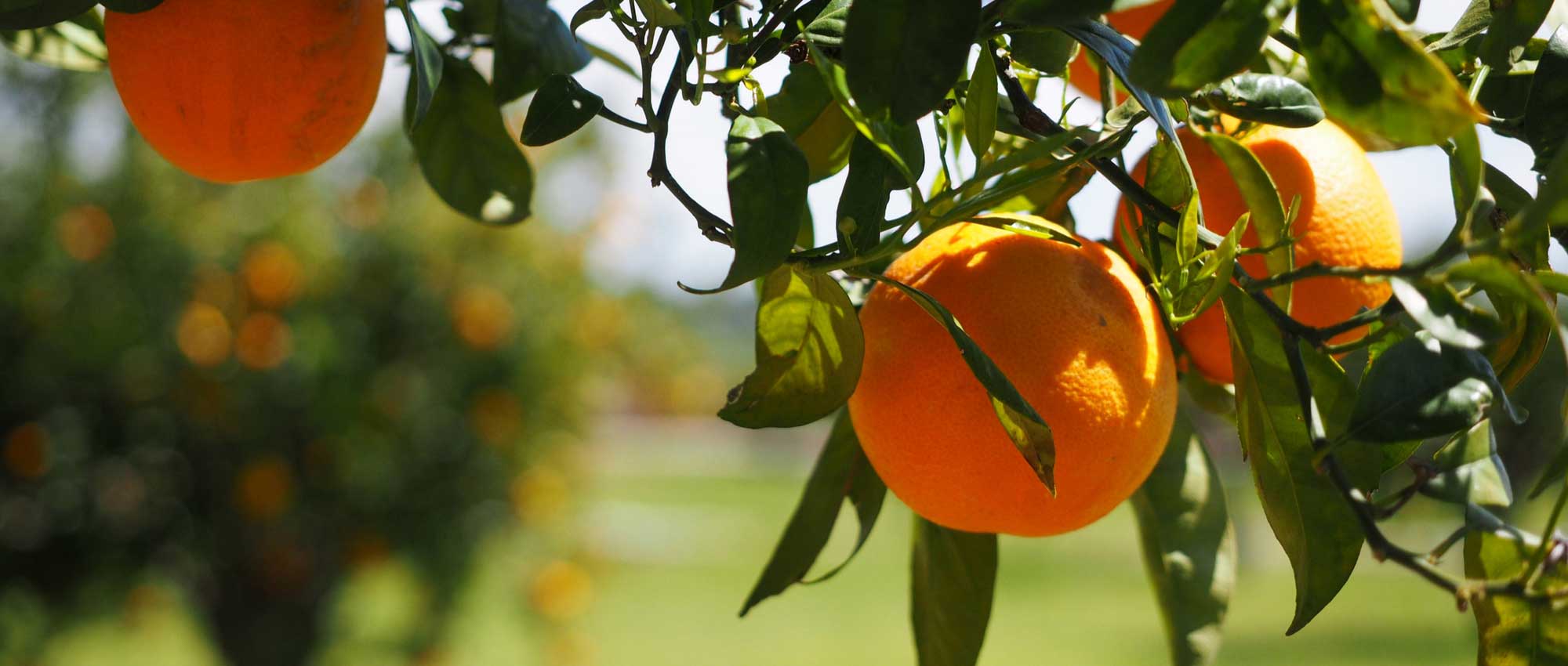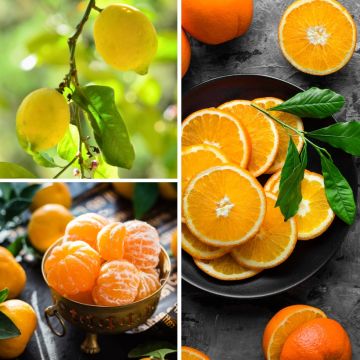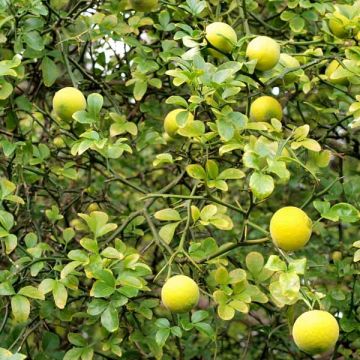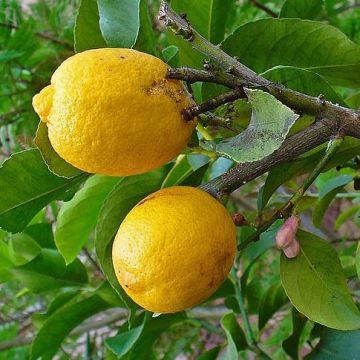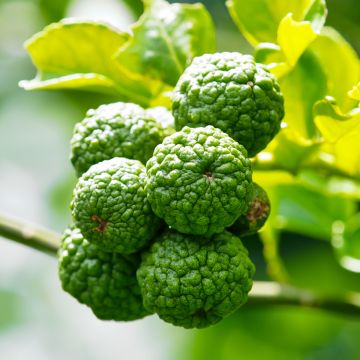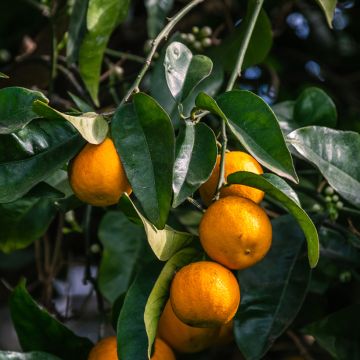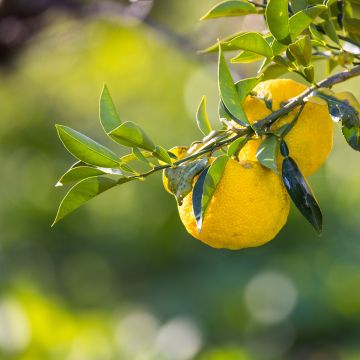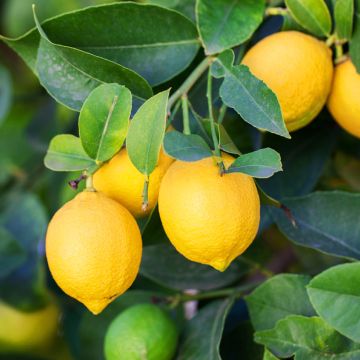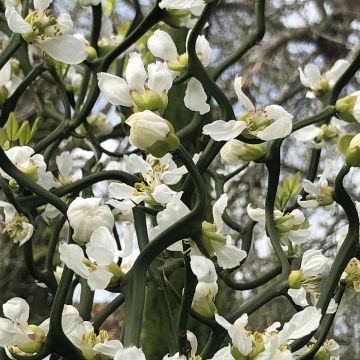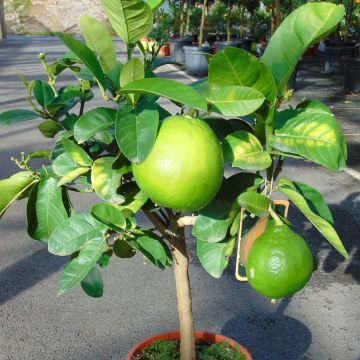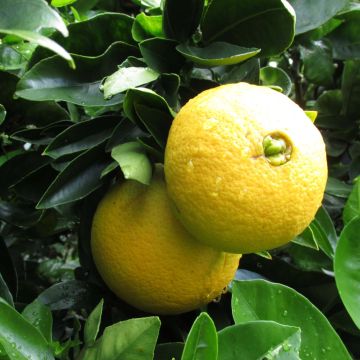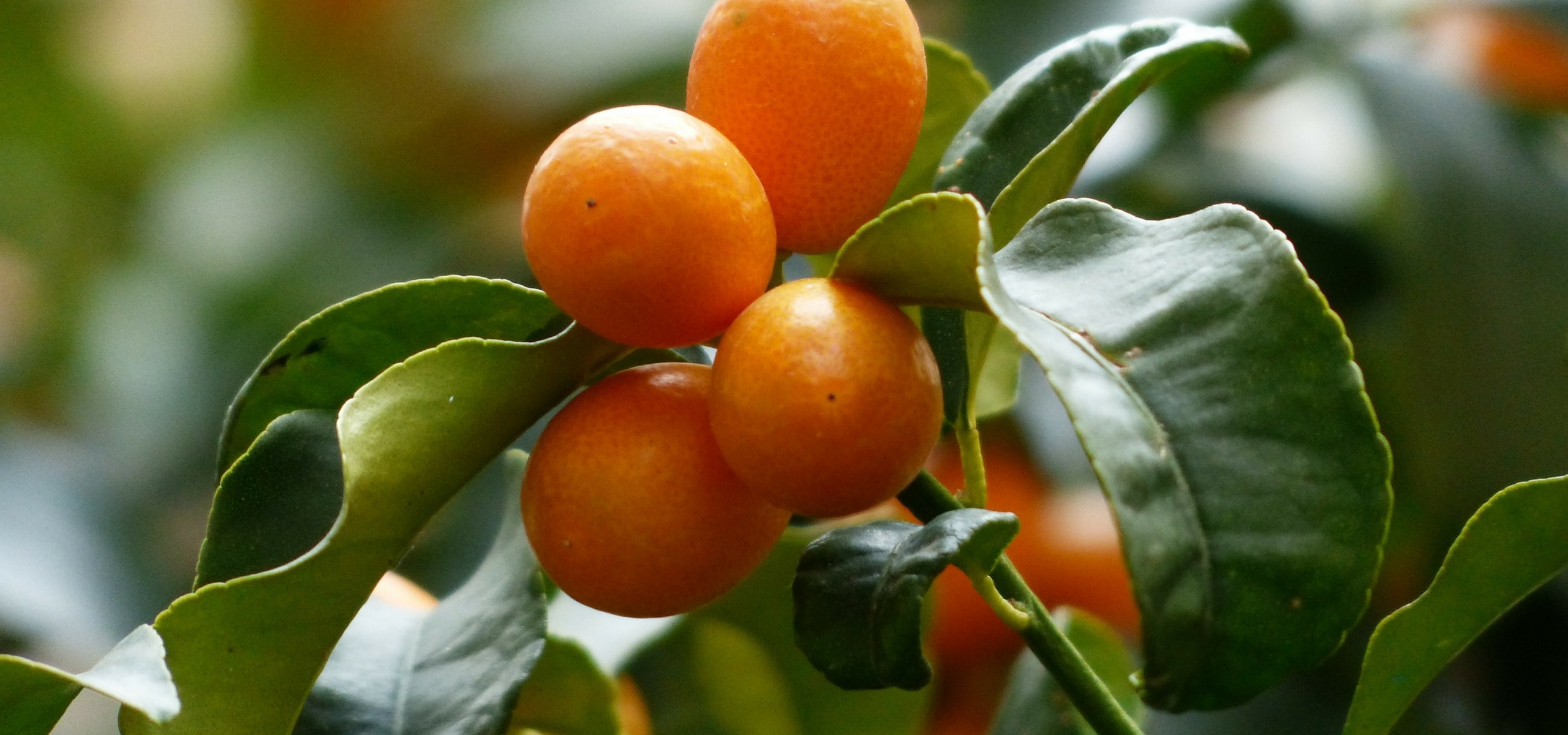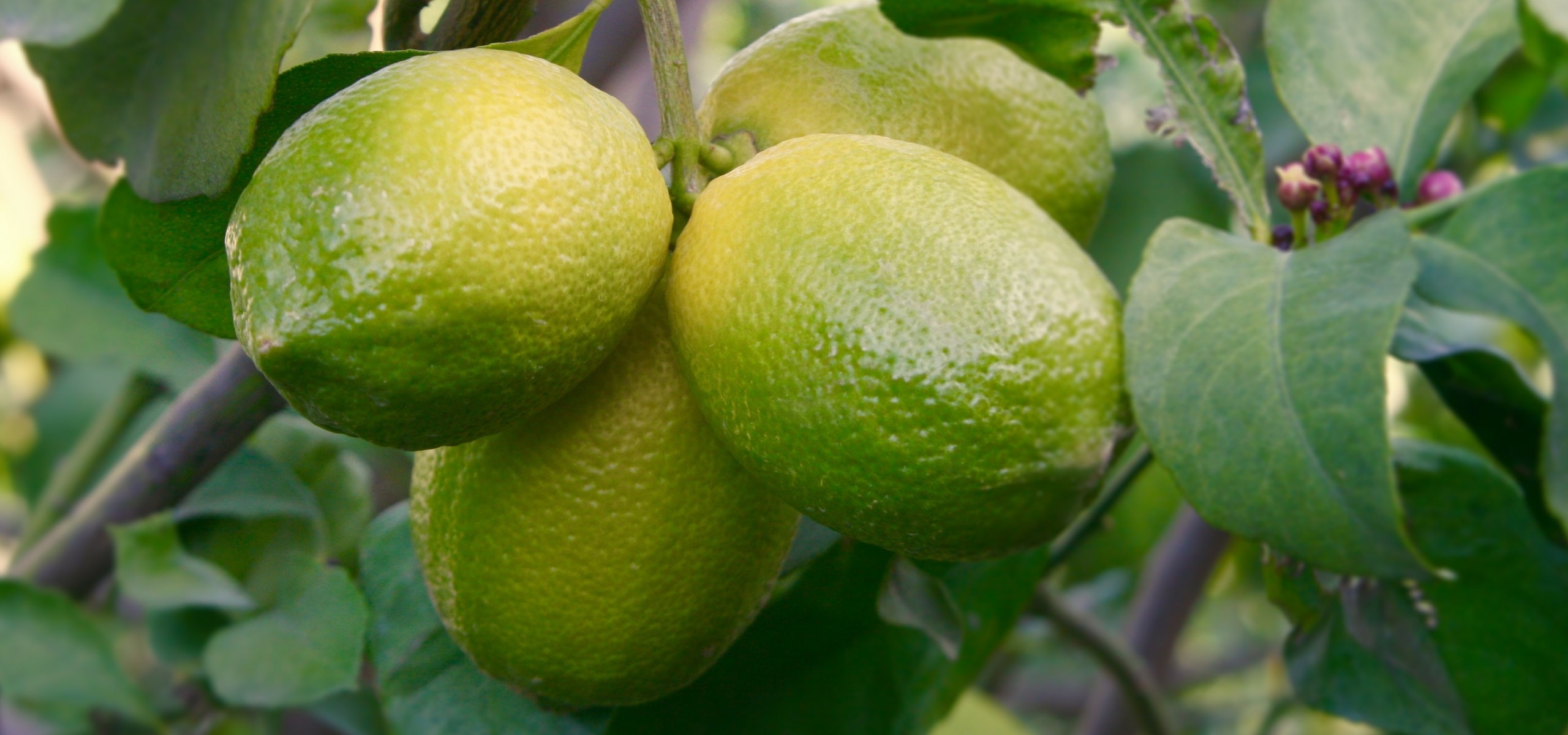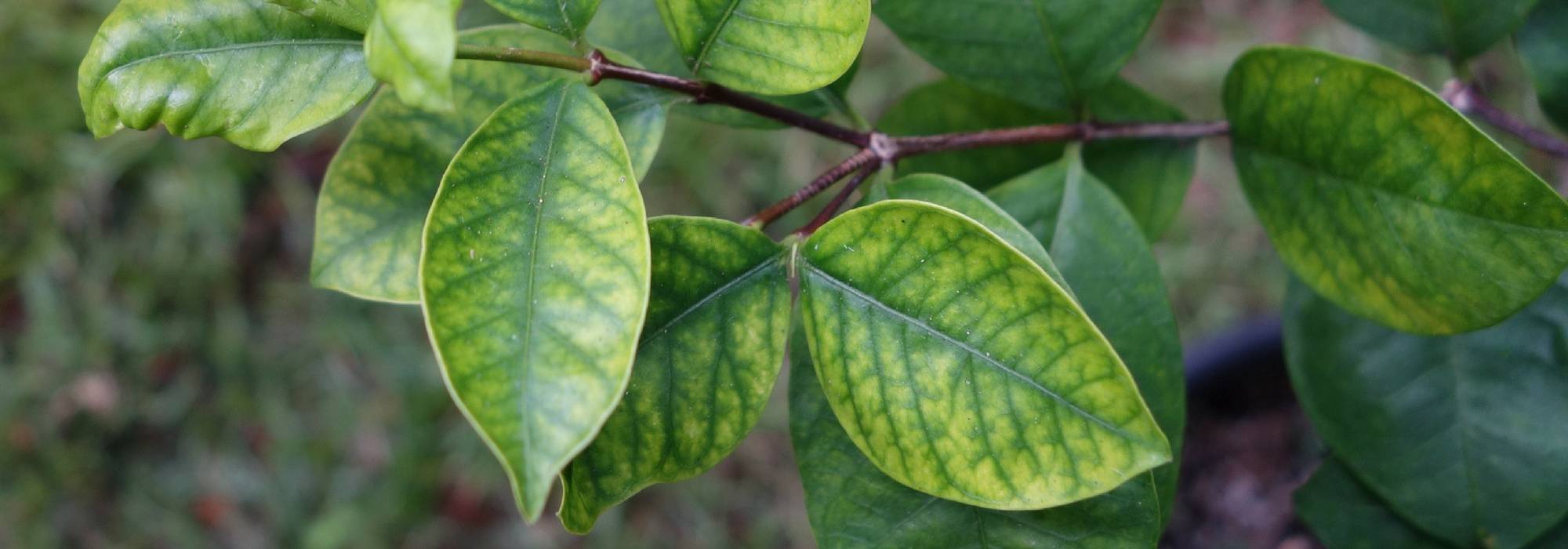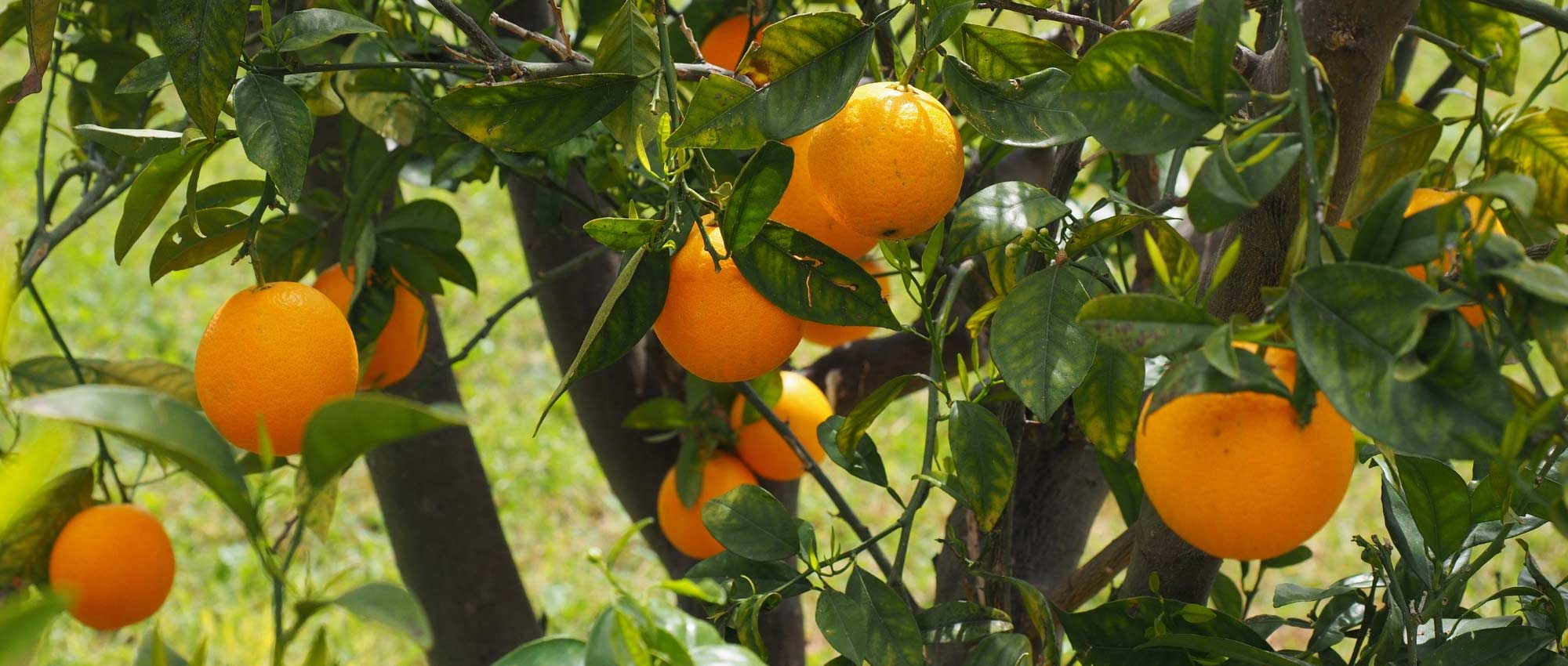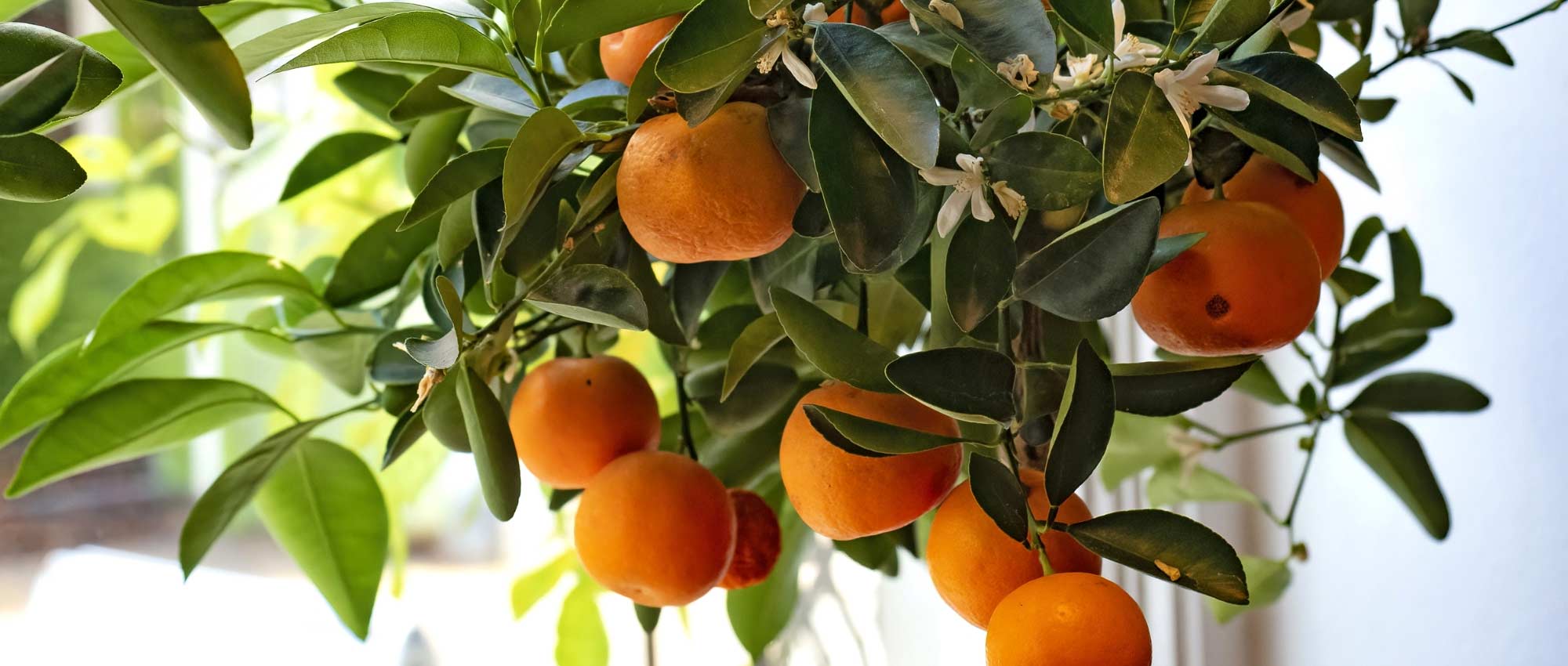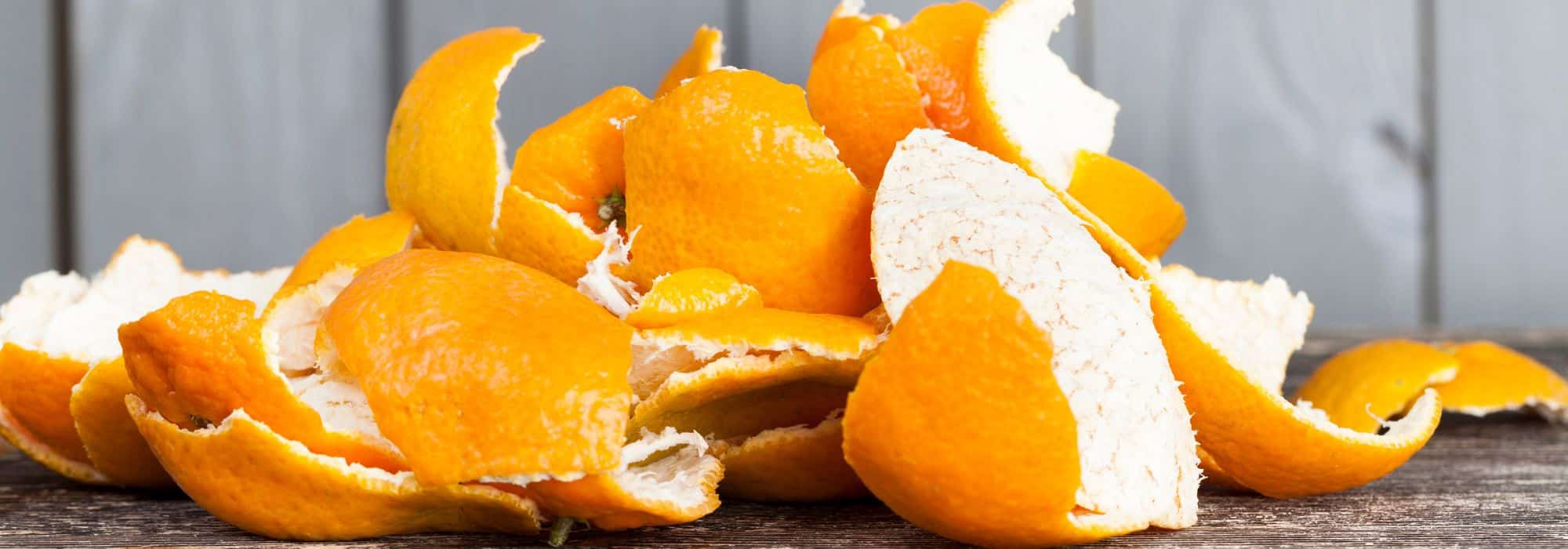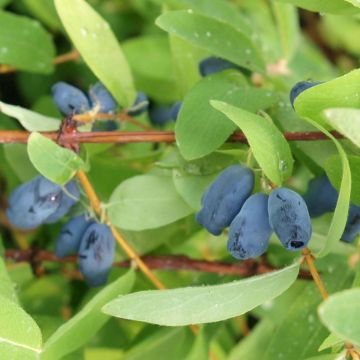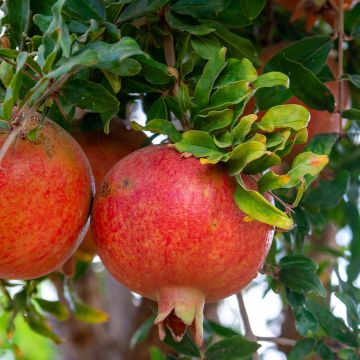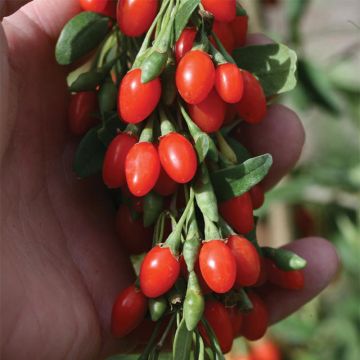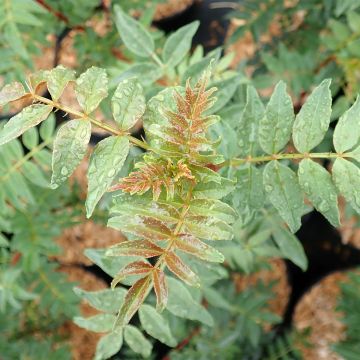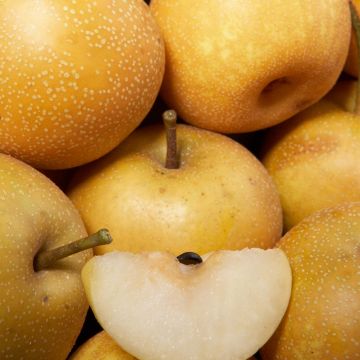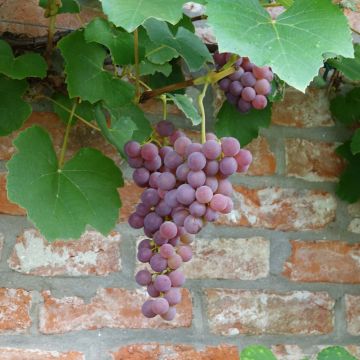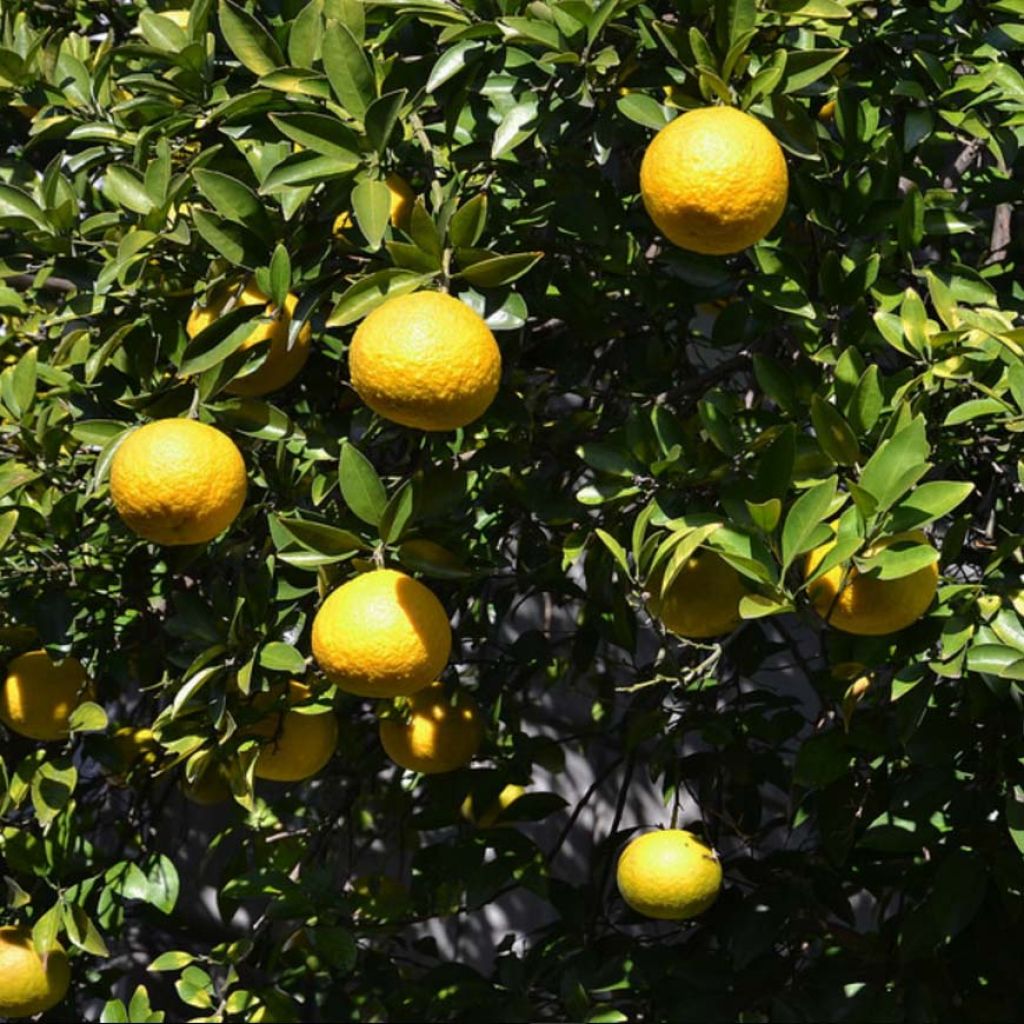

Citrus ichangensis - Ichang Papeda
Ichang Papeda - Citrus ichangensis
Citrus ichangensis
Ichang papeda, Ichang lemon
Received in good condition.
hugo, 27/02/2025
Special offer!
Receive a €20 voucher for any order over €90 (excluding delivery costs, credit notes, and plastic-free options)!
1- Add your favorite plants to your cart.
2- Once you have reached €90, confirm your order (you can even choose the delivery date!).
3- As soon as your order is shipped, you will receive an email containing your voucher code, valid for 3 months (90 days).
Your voucher is unique and can only be used once, for any order with a minimum value of €20, excluding delivery costs.
Can be combined with other current offers, non-divisible and non-refundable.
Home or relay delivery (depending on size and destination)
Schedule delivery date,
and select date in basket
This plant carries a 6 months recovery warranty
More information
We guarantee the quality of our plants for a full growing cycle, and will replace at our expense any plant that fails to recover under normal climatic and planting conditions.

Description
The Ichang papeda, in Latin Citrus ichangensis, is a citrus tree remarkable for its hardiness and good resistance to drought, which possesses all the physical characteristics of lemon trees, both in terms of its evergreen foliage and the sweet fragrance of its small white flowers with a touch of pink. Its small fruits, edible but not very juicy, have a yellow zest when ripe, aromatic, although less fragrant than that of the Yuzu. It is generally more appreciated for its ornamental value and its tolerance to unfavourable growing conditions than for the taste quality of its fruits. It may be the only species in the genus Citrus that can be reliably grown in the ground in temperate areas of Europe. A citrus tree that must be tried!
Citrus ichangensis, from the Rutaceae family, is one of the northernmost citrus trees. It originates from southwestern and central-western China, which have climates quite similar to those found in southern Europe. Capable of surviving brief frosts of around -15 °C in China, it performs very well in gardens even in central England, and its hardiness is fully proven to at least -10 °C.
It is a thorny bush with a bushy habit, as wide as it is tall, reaching an average size of 3.50m (11ft) in all directions at maturity. The young shoots are covered in thorns. Its leaves, thin and evergreen, purplish at budbreak, are 4 to 6 times longer than wide, spindle-shaped, pointed at their tips. The petioles of the leaves are wide, winged, and sometimes as long as the leaf itself. The flowers are campanulate, remarkably fragrant, small for a citrus tree, appearing in spring, in March-April depending on the climate, sometimes in May. The fruits resemble small round lemons that turn yellow when ripe. Their skin is moderately thick and aromatic. The flesh, divided into 8 segments, not very juicy, is yellow-white in colour and has a bitter or acidic taste, containing many easily germinating seeds of good size. It is rich in essential oils and very fragrant. The fruits are harvested in October-November when their concentration of essential oils is at its peak. It is a self-fertile bush which means that a single individual is sufficient for complete pollination and fruiting. This citrus tree is one of the two parents of the Yuzu, which is highly appreciated for its fragrance.
The Ichang papeda can be used in cooking to enhance exotic or Creole dishes. The zest of this citrus tree adds a very subtle touch of lemongrass to poultry or desserts. The zest is sometimes used. Its juice is used in refreshing drinks, adding a slight touch of bitterness. Growing it in pots is neither necessary given the hardiness of the plant in many regions, nor recommended for this bush that can reach 4m (13ft) in all directions. In the garden, it can be integrated into an informal hedge, just like Poncirus trifoliata, Pseudocydonia sinensis, Maclura pomifera, unusual bushes that are both decorative and fruitful, and truly resistant. However, be careful not to plant it in a soil that is too chalky or waterlogged.
Like all Citrus trees, the Ichang papeda contains in its leaves, flowers, and fruits visible oil glands from which essential oil is extracted by distillation (flowers and leaves) or by pressing (zest), with a fragrance described as fresh, citrusy, tangy, with green notes.
Ichang Papeda - Citrus ichangensis in pictures
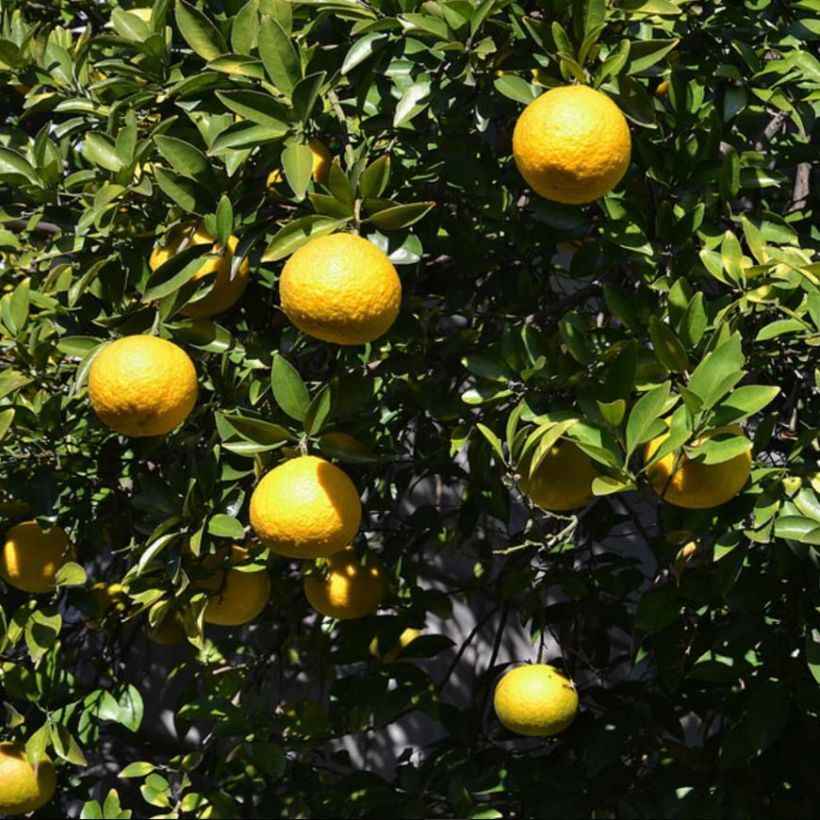

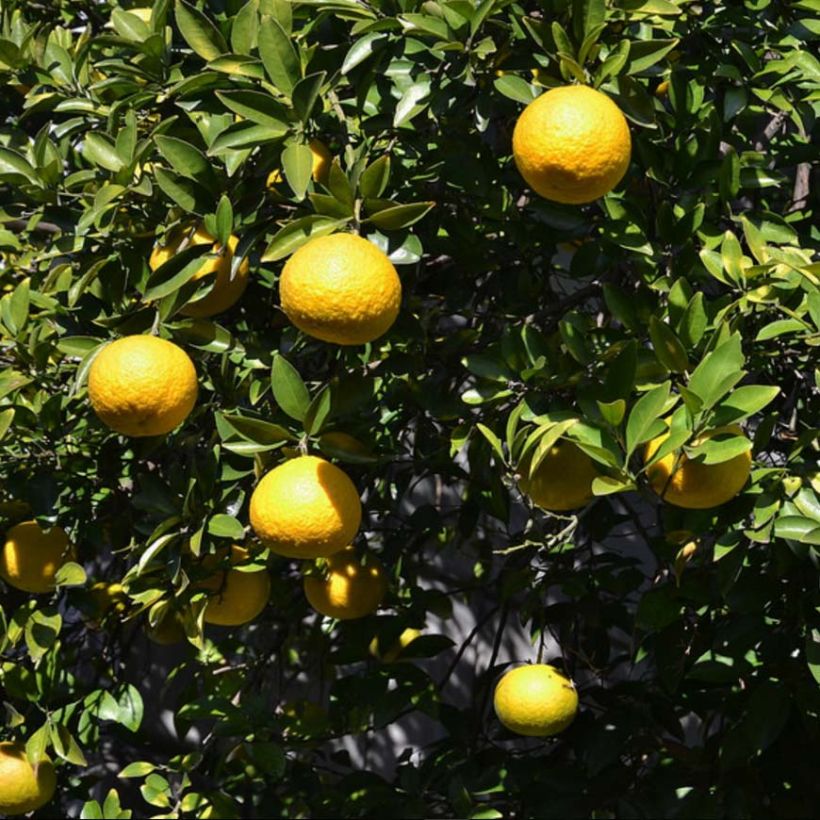

Plant habit
Fruit
Flowering
Foliage
Botanical data
Citrus
ichangensis
Rutaceae
Ichang papeda, Ichang lemon
Southeast Asia
Volkameriana (3L/4L pot - Clump)
Other Citrus trees
View all →Planting and care
Planting in the ground is recommended for this fairly vigorous Ichang papeda, especially since its good hardiness allows it in many regions with mild to moderate climates: it appreciates neutral, light, loamy or sandy soils, slightly acidic and non-limestone (pH between 6.5 and 7.5). The best time to plant is in early spring, in March and April. Be careful not to bury the collar. Citrus trees are naturally greedy and require water to bear fruit well: in any case, consider amending with well-decomposed compost or "special citrus" fertilizer. However, it tolerates drought episodes well but fears overly wet soils. Choose a sunny but not scorching location for your bush, sheltered from the wind to prevent it from drying out the foliage and dropping the young fruits forming. Place it in a location protected from sea spray.
Planting in a pot: in regions with continental or montane climates, Citrus ichangensis will be planted in a large pot that you can keep in a greenhouse or a slightly heated veranda. It will appreciate being outdoors throughout the summer. Planting in a pot or repotting takes place at the end of summer. Choose a pot slightly larger than the root system, as citrus trees do not like to feel cramped. Moisten the root ball well. To increase the drainage capacity of the mix, line the bottom of the pot with clay pebbles. Loosen the root ball and mix two-thirds garden soil with one-third "special citrus" potting soil. Water generously. Prefer pots made of breathable materials or terracotta.
Citrus trees generally need a lot of water to thrive. Water if necessary with low or non-limestone water, without saturating the potting soil with water. Similarly, make sure to regularly provide the fertilizer it needs: every 6 months for slow-release granular fertilizer or every 3 waterings for liquid fertilizer.
Planting period
Intended location
Care
Planting & care advice
-
, onOrder confirmed
Reply from on Promesse de fleurs
Similar products
Haven't found what you were looking for?
Hardiness is the lowest winter temperature a plant can endure without suffering serious damage or even dying. However, hardiness is affected by location (a sheltered area, such as a patio), protection (winter cover) and soil type (hardiness is improved by well-drained soil).

Photo Sharing Terms & Conditions
In order to encourage gardeners to interact and share their experiences, Promesse de fleurs offers various media enabling content to be uploaded onto its Site - in particular via the ‘Photo sharing’ module.
The User agrees to refrain from:
- Posting any content that is illegal, prejudicial, insulting, racist, inciteful to hatred, revisionist, contrary to public decency, that infringes on privacy or on the privacy rights of third parties, in particular the publicity rights of persons and goods, intellectual property rights, or the right to privacy.
- Submitting content on behalf of a third party;
- Impersonate the identity of a third party and/or publish any personal information about a third party;
In general, the User undertakes to refrain from any unethical behaviour.
All Content (in particular text, comments, files, images, photos, videos, creative works, etc.), which may be subject to property or intellectual property rights, image or other private rights, shall remain the property of the User, subject to the limited rights granted by the terms of the licence granted by Promesse de fleurs as stated below. Users are at liberty to publish or not to publish such Content on the Site, notably via the ‘Photo Sharing’ facility, and accept that this Content shall be made public and freely accessible, notably on the Internet.
Users further acknowledge, undertake to have ,and guarantee that they hold all necessary rights and permissions to publish such material on the Site, in particular with regard to the legislation in force pertaining to any privacy, property, intellectual property, image, or contractual rights, or rights of any other nature. By publishing such Content on the Site, Users acknowledge accepting full liability as publishers of the Content within the meaning of the law, and grant Promesse de fleurs, free of charge, an inclusive, worldwide licence for the said Content for the entire duration of its publication, including all reproduction, representation, up/downloading, displaying, performing, transmission, and storage rights.
Users also grant permission for their name to be linked to the Content and accept that this link may not always be made available.
By engaging in posting material, Users consent to their Content becoming automatically accessible on the Internet, in particular on other sites and/or blogs and/or web pages of the Promesse de fleurs site, including in particular social pages and the Promesse de fleurs catalogue.
Users may secure the removal of entrusted content free of charge by issuing a simple request via our contact form.
The flowering period indicated on our website applies to countries and regions located in USDA zone 8 (France, the United Kingdom, Ireland, the Netherlands, etc.)
It will vary according to where you live:
- In zones 9 to 10 (Italy, Spain, Greece, etc.), flowering will occur about 2 to 4 weeks earlier.
- In zones 6 to 7 (Germany, Poland, Slovenia, and lower mountainous regions), flowering will be delayed by 2 to 3 weeks.
- In zone 5 (Central Europe, Scandinavia), blooming will be delayed by 3 to 5 weeks.
In temperate climates, pruning of spring-flowering shrubs (forsythia, spireas, etc.) should be done just after flowering.
Pruning of summer-flowering shrubs (Indian Lilac, Perovskia, etc.) can be done in winter or spring.
In cold regions as well as with frost-sensitive plants, avoid pruning too early when severe frosts may still occur.
The planting period indicated on our website applies to countries and regions located in USDA zone 8 (France, United Kingdom, Ireland, Netherlands).
It will vary according to where you live:
- In Mediterranean zones (Marseille, Madrid, Milan, etc.), autumn and winter are the best planting periods.
- In continental zones (Strasbourg, Munich, Vienna, etc.), delay planting by 2 to 3 weeks in spring and bring it forward by 2 to 4 weeks in autumn.
- In mountainous regions (the Alps, Pyrenees, Carpathians, etc.), it is best to plant in late spring (May-June) or late summer (August-September).
The harvesting period indicated on our website applies to countries and regions in USDA zone 8 (France, England, Ireland, the Netherlands).
In colder areas (Scandinavia, Poland, Austria...) fruit and vegetable harvests are likely to be delayed by 3-4 weeks.
In warmer areas (Italy, Spain, Greece, etc.), harvesting will probably take place earlier, depending on weather conditions.
The sowing periods indicated on our website apply to countries and regions within USDA Zone 8 (France, UK, Ireland, Netherlands).
In colder areas (Scandinavia, Poland, Austria...), delay any outdoor sowing by 3-4 weeks, or sow under glass.
In warmer climes (Italy, Spain, Greece, etc.), bring outdoor sowing forward by a few weeks.






























